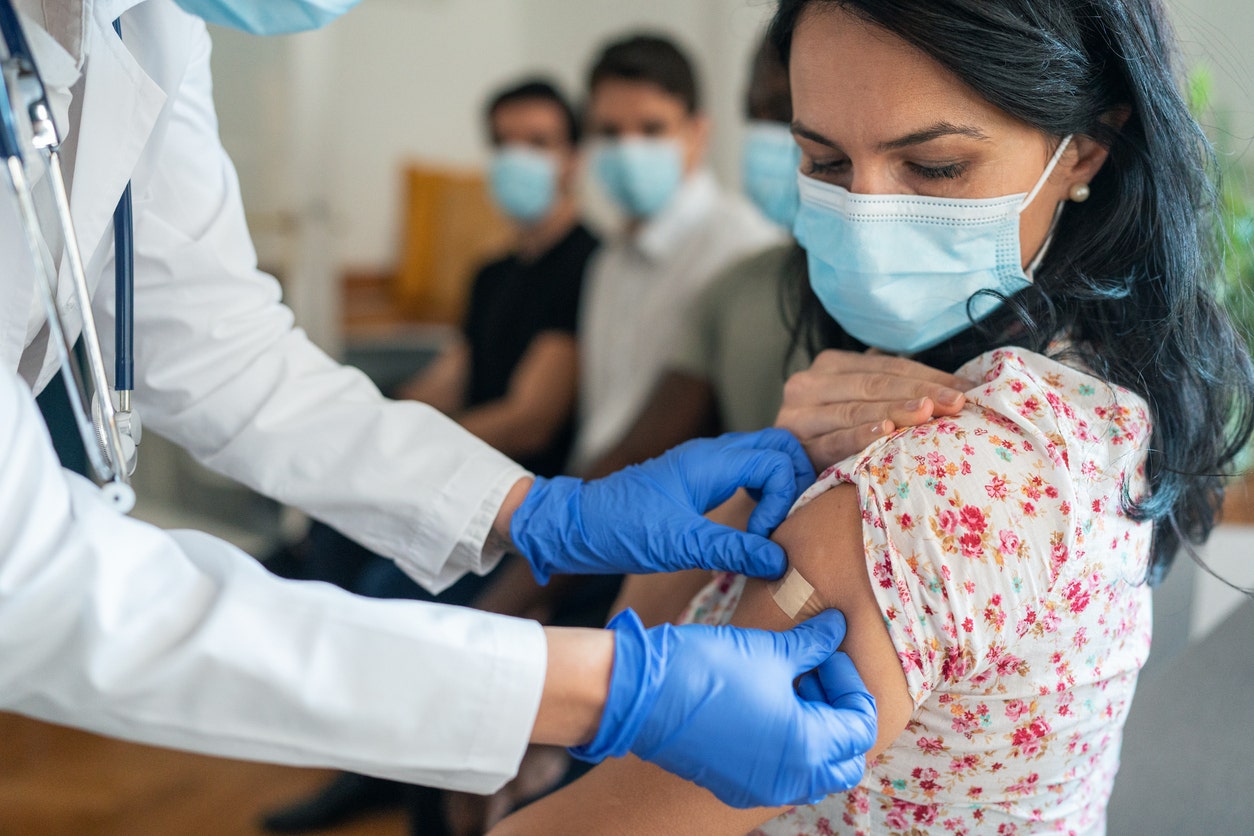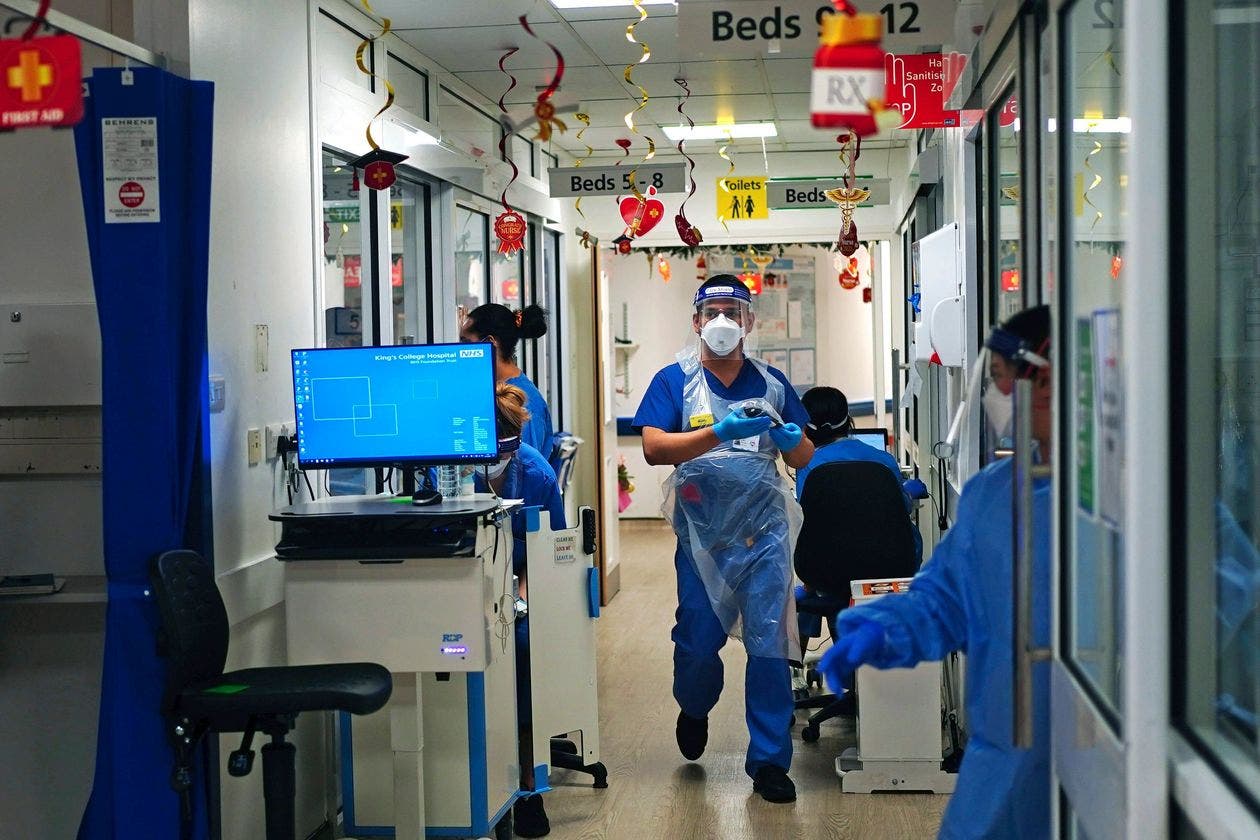COVID air monitor from scientists can detect virus in indoor settings within 5 minutes
Device could be installed in hospitals, airports, offices, other indoor locations potentially
Greg Gutfeld: The COVID story is unraveling fast
Fox News host Greg Gutfeld discusses the latest reports about the potential origin of COVID-19 and the media’s narrative on the virus on 'Gutfeld!'
A research team said it is paving the way for an easier detection of virus variants within indoor spaces.
Scientists have developed a novel air monitor with special technology that is said to quickly detect — within five minutes — if any of the virus variants that cause COVID-19 are lurking in an indoor room.
The results were published in Nature Communications in the journal’s July 10 edition as part of a collaboration between the engineering and medicine schools at Washington University in St. Louis, Missouri.
COVID PUBLIC HEALTH EMERGENCY IS OVER: WHAT IT MEANS FOR YOU
"This device can be installed in various settings such as hospitals, airports, office spaces, theaters or any crowded indoor location where the risk of virus transmission is high and ventilation may be inadequate," first author Dr. Joseph Puthussery and co-author Dr. Carla Yuede told Fox News Digital in emailed comments.
Puthussery is a scientist at the Center for Aerosol Science & Engineering in the McKelvey School of Engineering at Washington University, while Yuede is an associate professor in the departments of psychiatry, neurology and neuroscience at Washington University School of Medicine.

Scientists have developed a real-time air monitor with special technology that is said to quickly detect if any virus variants that cause COVID-19 are lurking in an indoor room. Above, individuals during the first year of COVID in China. (AP Photo/Chen Si)
Airborne aerosol detectors have difficulty detecting COVID-19 virus particles because the indoor air is so diluted that it's "like finding a needle in a haystack," said co-author Rajan Chakrabarty, PhD, researcher and associate engineering professor at Washington University.
But now, the scientists said they've created a real-time monitor that can detect any of the SARS-CoV-2 virus variants in a room within about five minutes.
Biosensor detects COVID-19 virus particles
The idea for the project started after the team wondered if a micro-immunoelectrode (MIE) biosensor that was previously developed for detecting a biomarker for Alzheimer’s disease could be converted into a detector for SARS-CoV-2.
WHO DOWNGRADES CORONAVIRUS PANDEMIC, NO LONGER A GLOBAL EMERGENCY
"The MIE biosensor is a microelectrode containing an immobilized antibody (or nanobody) on the surface and uses an electrochemical method of detection," Puthussery and Yuede told Fox News Digital in an email.
The researchers first developed the custom-built air sampler through simulations.
"The combination of the small size of the electrode and [the] specificity of the antibody/antigen interaction makes this biosensor very sensitive and specific to the target of interest," they also said.
The team exchanged the antibody in the biosensor that recognizes a marker for Alzheimer’s disease to a "nanobody" — which recognizes the spike protein from the SARS-CoV-2 virus.
The group then integrated the biosensor into an air monitor that samples the indoor air at high speeds based on "wet cyclone technology."

An air monitor in development — measuring only one foot wide by 10 inches tall — lights up when a virus such as COVID-19 (shown here) is detected. (iStock)
The researchers first developed the custom-built air sampler through simulations to discover the optimal size and the sampling flow rate necessary for capturing the "nano-sized" virus particles, Puthussery and Yuede told Fox News Digital.
Once inside the sampler, centrifugal force pushes the air outward to mix with fluids that line its walls.
NEW REPORT SUGGESTS 'PANIC BUYING' OF MEDICATIONS BY PATIENTS AND PROVIDERS CAUSED DRUG SHORTAGES
These fluids contain the nanobody that detects COVID-19 virus particles — trapping the virus aerosols.
‘Virus collection efficiency'
Most commercial bioaerosol samplers have low flow rates — but the team’s air monitor has one of the highest flow rates, it said.
This means it can sample a larger volume of air over five minutes, the press release noted.
Its compact size, measuring only one foot wide by 10 inches tall, lights up when a virus is detected, alerting people to increased airflow or the circulation in the room, the press release added.

A novel air monitor created by researchers at Washington University in St. Louis, Missouri, detected the virus particles in the seven samples in the rooms contaminated with COVID-19 virus, the researchers said. Above, a woman receives a vaccination against the coronavirus. (iStock)
"We conducted experimental comparisons of the virus collection efficiency between the wet cyclone and two commercially available low-flow research-grade bioaerosol samplers," the researchers told Fox News Digital.
"These experiments involved aerosolizing inactivated SARS-CoV-2 at various concentrations within a well-mixed sealed chamber."
The monitor is at the proof-of-concept stage as of now. The research team is working to commercialize it.
They found the wet cyclone either outperformed or had comparable performance to the other samplers.
They validated their findings by collecting air samples from the self-isolating bedrooms of two individuals infected with COVID-19 — as well as a control room that was not contaminated with COVID-19 air.
The air monitor detected the virus particles in the seven samples in the rooms contaminated with COVID-19 virus.
MANY YOUNG KIDS ARE NOT GETTING ‘LIFE-SAVING’ VACCINES, STUDY FINDS: ‘CONCERNING TREND’
And it did not detect any virus particles in samples from the virus-free control room.
‘Real-time data’
The monitor will help people in the future "easily recognize and avoid areas that have reported a high presence of the virus," the researchers told Fox News Digital.
The team hopes to expand the air monitor capabilities to measure other common viruses that infect people as well, such as influenza, RSV and rhinovirus.

The researchers validated their findings by collecting air samples from the self-isolating bedrooms of two individuals infected with COVID-19 — as well as a control room that was not contaminated with COVID-19 air. Above, hospital teams care for patients with COVID-19 during the pandemic. (Associated Press)
This will help people know when to wear masks when entering areas that consistently show the presence of a virus.
The device provides "peace of mind," the researchers said.
"If you are someone who feels stressed attending a crowded public indoor event, you can access real-time data and be assured of your safety," the researchers said.
Limitations of the device
One limitation of the monitor is "the high noise level (75–80 dB) during device operation, which can have an adverse effect on the health and comfort of the occupants of a building," the researchers told Fox News Digital.
CLICK HERE TO SIGN UP FOR OUR HEALTH NEWSLETTER
"Current efforts are underway to find economically feasible solutions to reduce the noise levels to <65 dB, such as using a low-noise motor and soundproofing the device exterior using an acoustic liner."
CLICK HERE TO GET THE FOX NEWS APP
The monitor is at the proof-of-concept stage as of now.
The research team is working to commercialize the air monitor in the near future.

